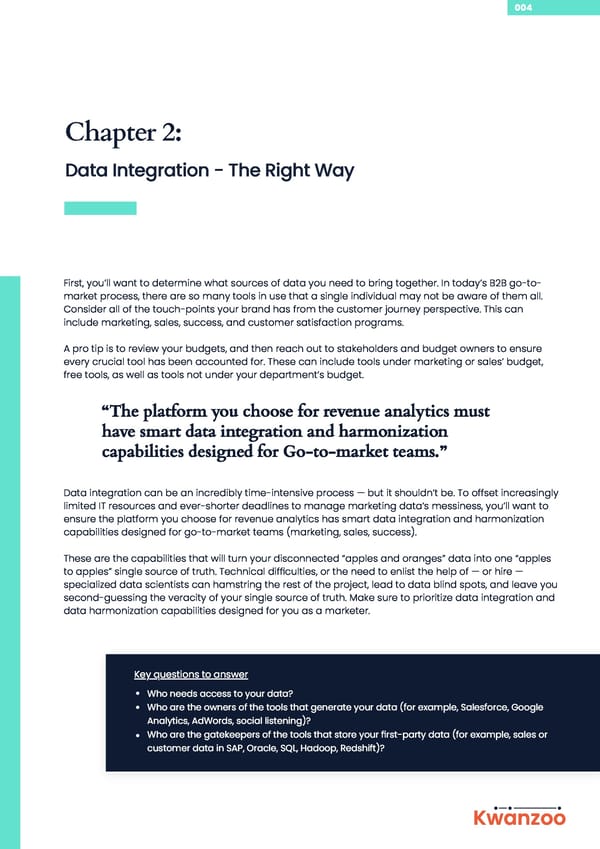004 Chapter 2: Data Integration - The Right Way First, you’ll want to determine what sources of data you need to bring together. In today’s B2B go-to- market process, there are so many tools in use that a single individual may not be aware of them all. Consider all of the touch-points your brand has from the customer journey perspective. This can include marketing, sales, success, and customer satisfaction programs. A pro tip is to review your budgets, and then reach out to stakeholders and budget owners to ensure every crucial tool has been accounted for. These can include tools under marketing or sales’ budget, free tools, as well as tools not under your department’s budget. “T“The plahe platfotform yrm you choose foou choose for rr reevveenue analytics must nue analytics must hahavve smart dae smart data inta intetegragratiotion and harmon and harmonizanizatiotion n capabilities designecapabilities designed fod for Go-to-markr Go-to-market teamset teams.” .” Data integration can be an incredibly time-intensive process — but it shouldn’t be. To offset increasingly limited IT resources and ever-shorter deadlines to manage marketing data’s messiness, you’ll want to ensure the platform you choose for revenue analytics has smart data integration and harmonization capabilities designed for go-to-market teams (marketing, sales, success). These are the capabilities that will turn your disconnected “apples and oranges” data into one “apples to apples” single source of truth. Technical difficulties, or the need to enlist the help of — or hire — specialized data scientists can hamstring the rest of the project, lead to data blind spots, and leave you second-guessing the veracity of your single source of truth. Make sure to prioritize data integration and data harmonization capabilities designed for you as a marketer. Key questions to answer Who needs access to your data? Who are the owners of the tools that generate your data (for example, Salesforce, Google Analytics, AdWords, social listening)? Who are the gatekeepers of the tools that store your first-party data (for example, sales or customer data in SAP, Oracle, SQL, Hadoop, Redshift)? Kwanzoo
 2. Revenue Operations Analytics Page 4 Page 6
2. Revenue Operations Analytics Page 4 Page 6